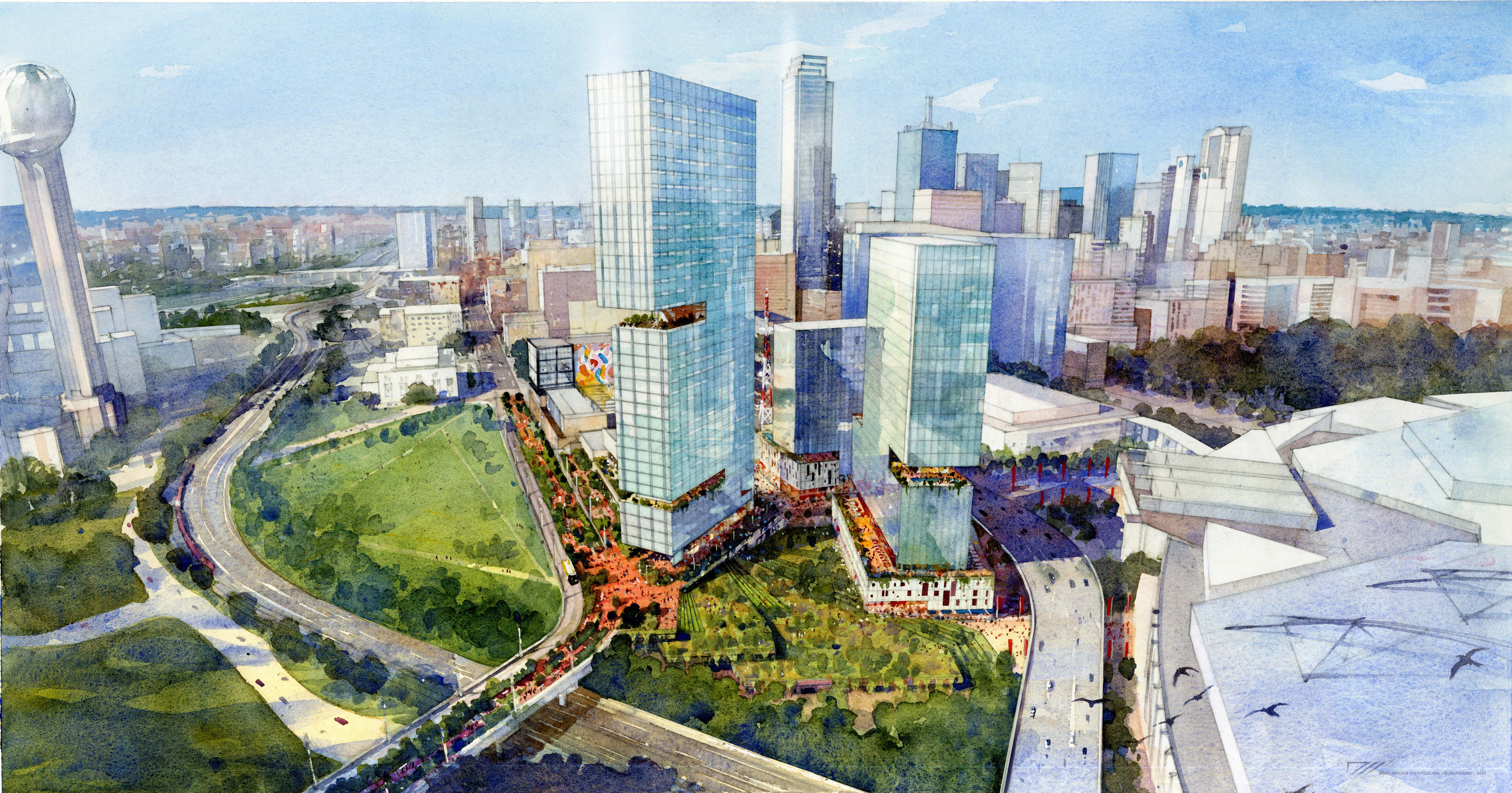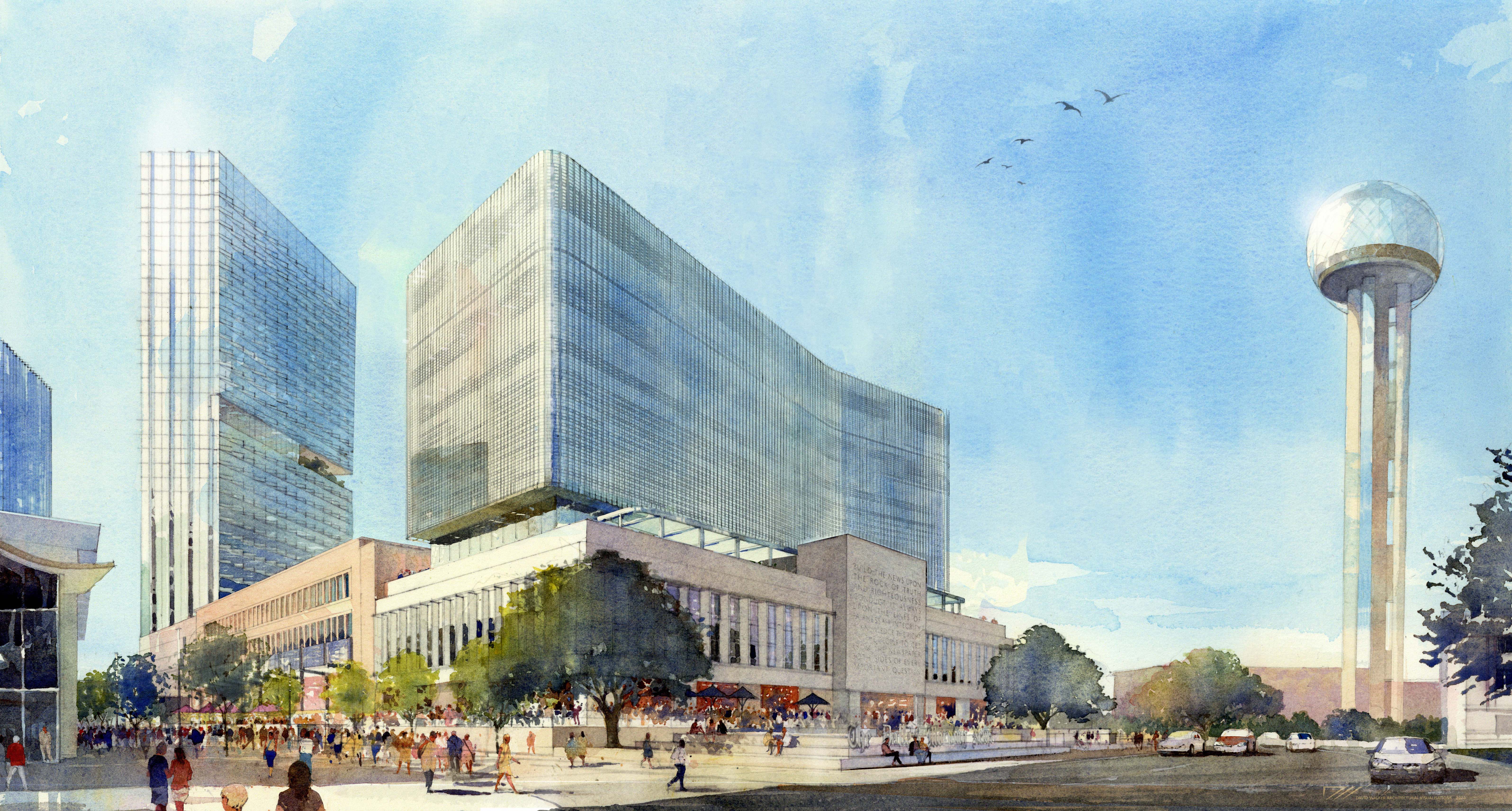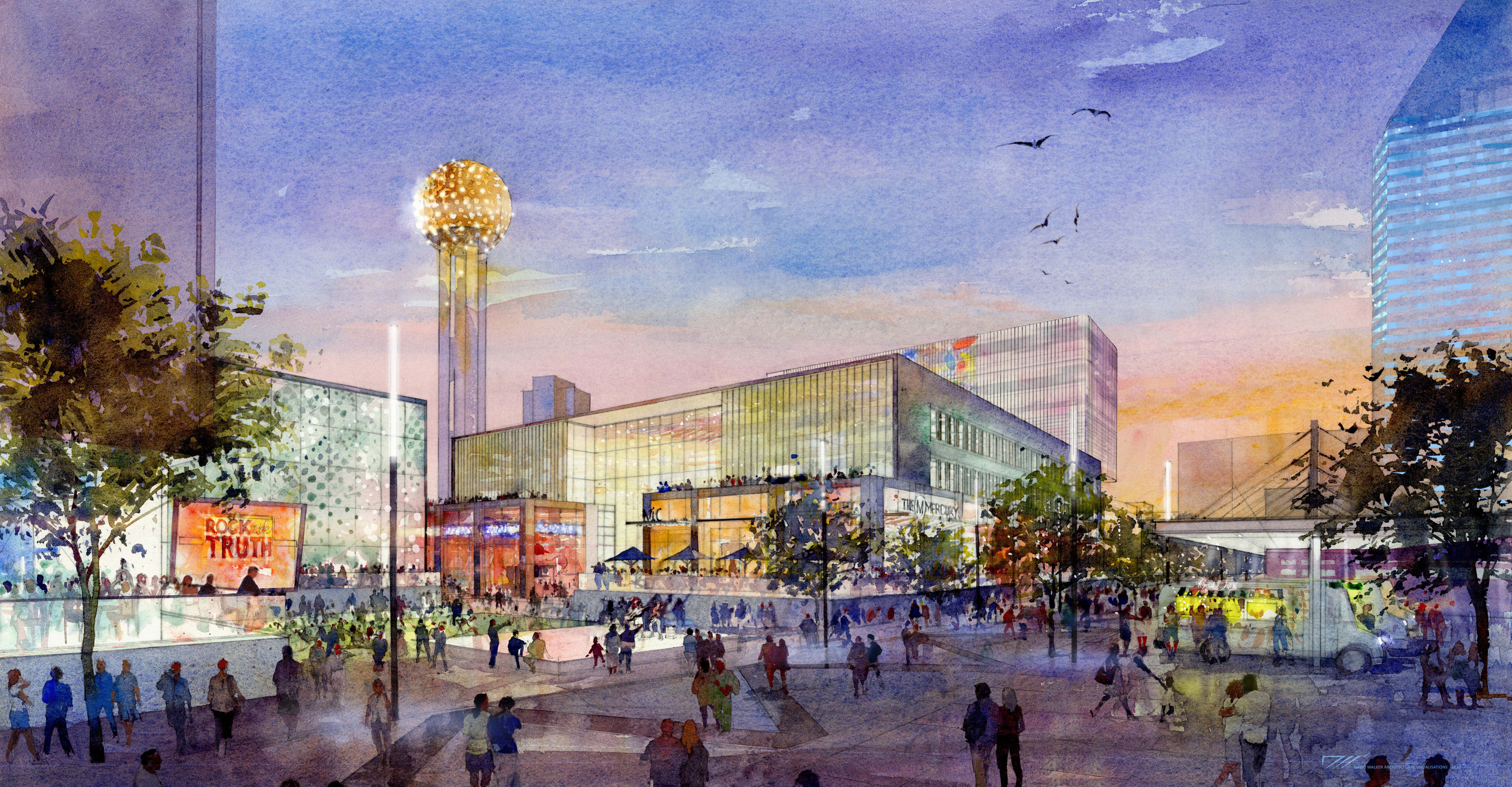
The Kay Bailey Hutchison Convention Center Dallas is, in many respects, the largest elephant in the room on the southern fringe of downtown. While a full-on removal of the convention center—though we hope an exception is made for George Dahl’s Dallas Municipal Auditorium—or a radical rethink of the existing structure is a necessary move, an even greater barrier remains in the infrastructure that is seemingly tangled within and around the building.
Roads, viaducts, light rail lines, and a trolley line all present physical obstacles that are vertically layered as much as they are intertwined in their planning. This is not limited to the convention center site itself but rather an ever-present obstacle in a larger district that will need to be addressed as future high-speed rail and the Harold Simmons Park take shape.
Where a convention center project may take some time to flesh out, the old home of the Dallas Morning News is a catalyst opportunity toward understanding how the movement of people can lead to community-focused opportunities. The site can be a model for the convention center site to glean from and connect with.

Our study of the site in late 2020 for Ray Washburne, who purchased the building, is not the first nor the latest look at the property. A common thread in the studies we viewed focused on the similar ask to create a destination out of the Dallas Morning News site and its existing buildings by using restaurants as its calling card. George Dahl’s historic building for the News was front and center in every study, including our own, and was preserved in its character and acted as the front door and face to downtown.
From there, the approaches we viewed were all different, ranging from higher density development to the integration of future modes of transit. While the focus on a destination in programming as a starting point can build activity within, our focus was on recognizing the potential informed by the edges.
It is important to note first that the Dallas Morning News area is not limited to its historic buildings. From Young Street, the site stretches south toward the viaducts, with the convention center’s western face as one of the edges. Rather than an architecture-first approach, we focused on a creating a flexible framework with three key strategies: re-inventing, re-imagining, and re-connecting what we called the Dallas Morning News District into the greater Dallas fabric.

The history of the site deserves to be respected and preserved but also informs how we might see the bigger picture of a future district. What the Dallas Morning News site also benefits from most is the re-invention of the West End as a cultural and entrepreneurial hub for the city. The approach is just as much about celebrating the past as it elevates what is present. It is also an opportunity to inform those who come to experience the city in the future.
We thought of the Dallas Morning News building as a starting point and a catalyst, having a dialogue with the nearby Ferris Plaza and Union Station to create a draw toward the site and elevate what is already there. Here, it was important that the northern edge of the site remain open for people to experience, expanding upon the current steps as a place to interact with Ferris Plaza and the Rock of Truth as an ever-present mark of significance.

The Dallas Morning News building itself functioned for many years as its own community, in a building that told stories just as much as it inspired new ones. Envisioned as a boutique hotel, the preservation of the existing architecture creates a tie to history. The room tower rises above the roof and is set back from the historic edge, curved to create visual cues toward landmarks such as Reunion Tower.
The paper’s former production facility can play a key role, connecting people with pathways and spaces that break down the block, all of which opens toward Houston and Record streets. This gives the Oak Cliff Streetcar an exciting destination at its stop just as it does for cyclists and pedestrians arriving from the southwest across the viaduct. It can be a front door to the city. Using the volume of the building, we created an urban living room with entertainment, restaurants, and upper-level terraces to create a layered experience focused around an open-air community plaza.
Much of what we have discussed around the existing Dallas Morning News buildings focused on breaking down hard barriers or opening the connectivity to the street, creating activation on every edge and not just in one focused point. As for the car, the ability for people to walk and gather was the focus. Record becomes a limited use street where traffic can be slowed down for drop-offs and for the hotel. It was important for the connection to Ferris Plaza be people-focused rather than used as drop-off or parking.

While reconnecting may mean understanding the physical movement of people, there are considerations we must understand in connecting the project through identity and purpose. The most exciting opportunities focused along the southern edge of the site, where we felt the current layered infrastructure can form a terraced park that connects people to the heart of the district. It also creates views toward, and connections into, the Trinity. That also means a future path into the planned Harold Simmons Park along the nearby levees.
As for the convention center site, we viewed the space underneath the viaduct bridge as a gateway. We view this area as a dense, mixed-use neighborhood that adds much-needed residents to an underused part of downtown. As for the architecture itself, no matter the height, the approach should continue to connect in ways that are in the spirit of the experiences at the urban levels below.
Re-connecting the Dallas Morning News site and this portion of downtown should be informed by what the city is telling us about its future. In many ways, the West End is a prime example that provides aspirational cues. That means a transit-rich, walkable neighborhood where people feel more attuned to their surroundings; cultural buildings with a significance that speaks to the community; parks appropriately scaled and programmed; and a platform with which to create and innovate.
In our approach, it was never about creating a large moment or a single destination for the entire district. We can point to many examples in Dallas’ past as well as in other cities where this type of thinking is unsustainable. Development should include more attention toward making an urban fabric or reintroducing one that was lost. Above all, it should be a catalyst for what is to come next.
Status: Unbuilt Study
Location: Dallas, Texas
Role: Designer
Additional Credits: CallisonRTKL
Camila Simas